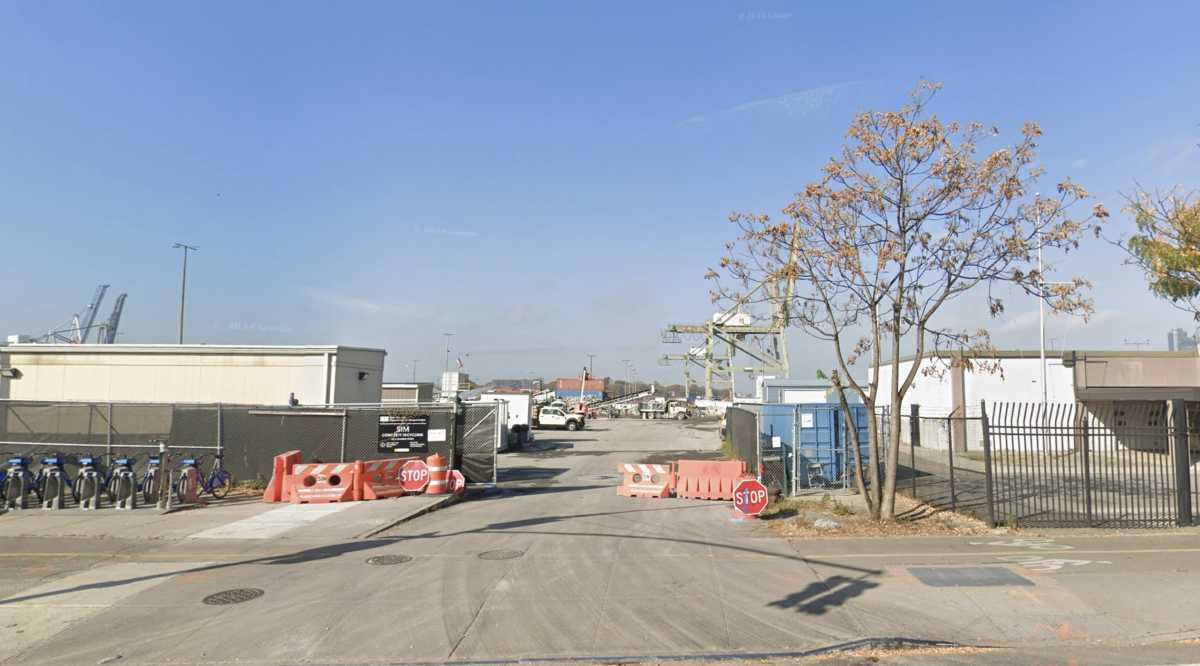Now that’s a baseball story
To The Editor:
Re “Yankees salute Little League’s M.V.P. — Most Valuable Person” (news article, July 22):
It’s so inspiring to hear stories like this, especially with all the negativity there has been lately with the steroids issue. It reminds us that, although these are famous ballplayers, they are, after all, human like the rest of us. Way to go Little League and Yankees.
Donna Pettitte
Electeds in developers’ pockets
To The Editor:
“Pols, protest, stuck string; Jacobs would have loved it” (news article, July 15):
For sheer chutzpah you can’t beat the politicians who support the proposed Rudin/St. Vincent’s megaproject in the heart of our historic district while lauding the dedication of Jane Jacobs Way. The Jane Jacobs that “discovered Greenwich Village, where the low-rise buildings allowed people to see the sky” must be turning over in her grave at the hypocrisy of those elected officials who would allow this “land grab” by the developer Rudin Management. Rudin’s luxury condos, along with St. Vincent’s humongous hospital tower, would cast a shadow across the Village and would not only lead to the demise of the Village, but also eviscerate the Landmarks Law. Moreover, the proposed condos would add roughly 400 new families to the neighborhood, and thus would strain, to the breaking point, an already overburdened local school system: a problem our representatives choose not to address.
An alternative solution to St. Vincent’s problems could have been found had political will and foresight been exercised; however, the truth is that the real estate developers have the politicians in their pockets. The politicos are selling our historic, cultural and architectural heritage — in other words, the soul of this great city — for political contributions by developers. It is happening, not only in the Village, but everywhere in the city.
Our local politicians have become lackeys of the real-estate establishment and truly don’t give a damn about New York City’s people, the city’s history or its future.
Gary A. Tomei
Tomei is president, W. 13th 100 Block Association; member, St. Vincent’s Community Working Group; and founding member, Protect the Village Historic District
Bravo for St. Vincent’s letters
To The Editor:
Re “Pols’ shameful glomming” (letter, by Geoffrey Knox, July 15) and “Jane and St. Vincent’s” (letter, by Carol Greitzer, July 15):
Thanks for keeping up the pressure on St. Vincent’s Hospital/Rudin by publishing letters and articles which support St. Vincent’s finding space for their hospital that is not in a historic district.
The New York Post, in an editorial on July 13, said that the current estimated cost of the new St. Vincent’s Hospital on the site of the O’Toole building is $1.6 billion.
It seems to me that anyone who can get their hands on $1.6 billion is like the proverbial 600-pound gorilla: He can sleep wherever he wants. With that kind of money, St. Vincent’s can find other space. They just don’t want to. I’ll bet Donald Trump could spend that amount of money for a hospital and find a space not on the west side of Seventh Ave. between 12th and 13th Sts.
Elizabeth Ryan
Showdown on the High Line
To The Editor:
Re “Rainforest activists: High Line wood a ‘pour’ choice” (news article, July 8):
Rainforests of New York (www.rainforestsofnewyork.org), the long-term campaign to end the use of rainforest wood in New York City government-funded projects, has challenged the much-touted “eco-park,” the High Line, for using it. While passing out fliers to Chelsea residents and tourists there a week ago, the campaign met Ricardo Scofidio, a principal partner of the team of Diller Scofidio + Renfro that designed the High Line park. We discussed the firm’s ecologically insensitive decision to use ipê wood from the Amazon.
During our conversation, Mr. Scofidio repeatedly claimed that the city’s Design Commission “insisted” the High Line use ipê trees, although his firm proffered thoughtful eco-designs that would salvage the old High Line rail ties or use recycled plastic lumber or regionally sourced hardwood from black locust trees. He also claimed that the Parks Department had provided specifications requiring ipê be used — despite the fact that Mayor Bloomberg has declared he would end, where possible, the city’s use of rainforest wood because of its significant contribution to global climate change.
We pointed out that ipê grows at a rate of two trees per acre and that these trees therefore can not be harvested sustainably. We mentioned that our warnings to the High Line and to the Parks Department were borne out again on July 13, when the results of yet another investigation of the fraudulent Forest Stewardship Council’s (F.S.C.) “eco-timber laundering” (the “eco-wood” scheme used by the High Line) were published in an article entitled, “Illegal Amazon timber passed off as eco-certified” (https://www.mnn.com/earth-matters/wilderness-resources/stories/illegal-amazon-timber-passed-off-as-eco-certified).
Last week, we wrote to the Design Commission to ask them about Mr. Scofidio’s assertion. They refuted his claim, stating that “[W]hile the Commission reviewed the design of the High Line, it did not request that a particular type of wood be used.”
This high-profile Parks Department project received more than $100 million in taxpayer funding from Mayor Bloomberg and Council Speaker Christine Quinn. It is unacceptable that Diller Scofidio + Renfro, the city of New York and the Friends of the High Line or anyone would use ecologically unsound sources of wood, whether or not the discredited “green” F.S.C. organization has approved of its use. Specifications can be changed, which is what we have been asking for.
That all of these parties skirt responsibility is testimony to our era of unaccountable public works.
Robert Jereski
Jereski is a member, Rainforests of New York
Lederman’s legacy
To The Editor:
Re “Gerson a friend of artists? Ha!” (letter, by Robert Lederman, July 15):
I always find it interesting when Robert Lederman attacks someone else for not being a friend of street artists. Although I have serious issues with some of Councilperson Gerson’s ideas for street artists, and have spoken out strongly against facets of his proposed street-vending legislation, it is Mr. Lederman’s philosophy that I feel has had the most negative impact on the street art scene.
Consider the lowly state of formally well-known public artist areas, such as West Broadway in Soho. Only five to seven years ago West Broadway was bustling with travelers from all over the world who made a point of coming to Soho to visit fine artists who publicly display their own original artwork on the weekends. As this public art scene had evolved, some fine artists began to unite as a way to represent their issues politically and to promote who they were and where they could be found.
However Mr. Lederman fought every attempt by these fine artists to come together. He is “president for life” of his own group and he guards his position with great jealousy. His method to retain control was, as it has always been, to use relentless mendacity and grossly false charges against members of the artist cooperative. This, in turn, caused paranoia in the ranks and, as a result of their amplified fear, many fine artists then jumped onto the Lederman bandwagon as a way to fend off threatened new legislation proposed by Mr. Gerson.
Mr. Lederman’s plan called for fine artists to join forces with the legion of vendors who sell cheap, often illegally copied, art reproductions and imitation jewelry, thereby blurring the line defining who fine artists actually are. This negative strategy proved to work against artists. Knowledgeable travelers and collectors simply have taken West Broadway and other formerly well-known artist areas off their itineraries because the scene has become so polluted with cheap reproduction art and knockoff merchandise that it is to be avoided. The result is that few, if any, public fine artists can support their families anymore. That is the Lederman legacy.
Of course, the economy has sunk to a new low, which has had a very negative effect on artists as well. However, the cooperative plan gave fine artists tools to deal with the economic downturn and recourses to which they now have no access. Without this plan, artists simply sit idly by while waiting for Mr. Lederman to fight Mr. Gerson over proposed legislation that appears to be going nowhere. At the same time, vendors of cheap reproductions sell briskly in areas where fine artists used to display their own artwork. What a shame for us all.
Lawrence White
Magnolia’s making a mess
To The Editor:
Isn’t it time for you to send a photographer to Bleecker St. to photograph the ubiquitous white boxes from the Magnolia Bakery overflowing every corner trash basket down to Grove St., not to mention the napkins and drink containers scattered around? Far from “remaking” Bleecker St., as the puff piece your paper ran in 2006 claims, this hyped-up cash cow is the major generator of garbage from the park down to Seventh Ave. and it singlehandedly destroyed Bleecker St.
Frances Genovese
Editor’s note: An article in the July 23, 2008, issue of The Villager, “‘Sex and City’ tour scratches Carrie’s stoop from its route,” referred to the litter problem caused by Magnolia Bakery: “[Aubrey] Lees walks her dogs each morning at Bleecker Playground, which she called ‘an absolute hellhole’ due to another ‘Sex and the City’ tour side effect — cupcake liners strewn on the ground. The show’s fans eat their cupcakes on benches in the park next to Bleecker Playground on Hudson St. ‘It is completely a mess and littered with little cupcake holders,’ she said, adding that Magnolia Bakery is also to blame for doing nothing to keep the park clean.”
E-mail letters, not longer than 250 words in length, to news@thevillager.com or fax to 212-229-2790 or mail to The Villager, Letters to the Editor, 145 Sixth Ave., ground floor, NY, NY 10013. Please include phone number for confirmation purposes. The Villager reserves the right to edit letters for space, grammar, clarity and libel. The Villager does not publish anonymous letters.

































